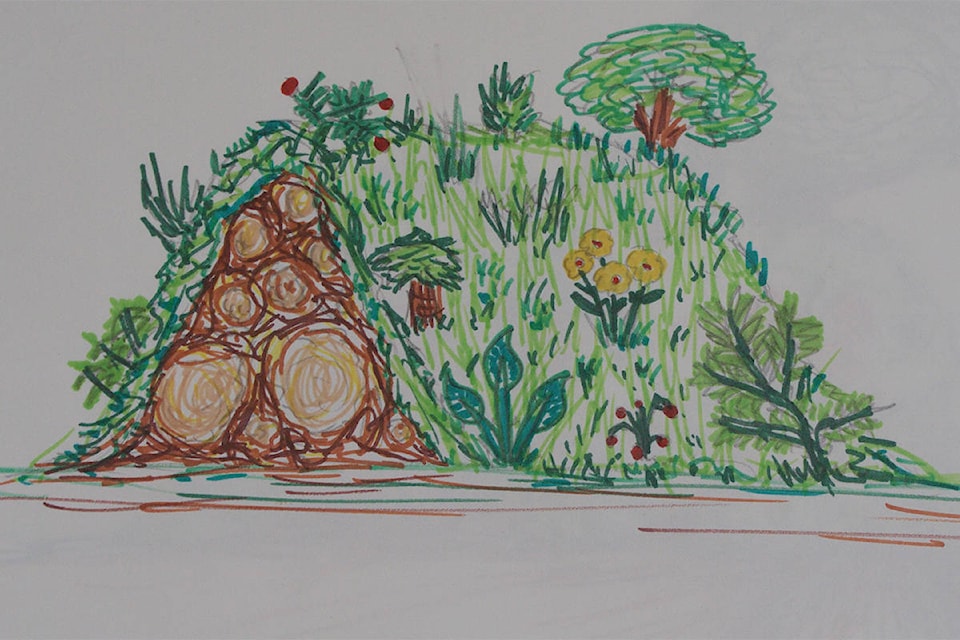Hügelkultur means “mound cultivation” or “hill garden.” It is a style of gardening commonly used in Germany and eastern European countries as well as in permaculture farming. It involves growing food atop a mound of logs, twigs, leaves, compost and soil.
Have you ever walked through a forest and noticed a fallen tree covered in plant life? This is what is known as a “nurse log.” A hügelkultur is a man-made version of this naturally occurring process. Hügelkulturs recreate the natural decomposition and water conserving systems found in forests, making them an asset in areas with limited water or space, and it is perfect for a lazy gardener. A hügelkultur is an exciting approach to gardening in which lush crops can be achieved without irrigation, fertilization or back-breaking and knee-crushing body positions, while also being able to bump up the local growing zone.
There are a variety of ways to build a hügelkultur. Begin by laying down branches and twigs, in the shape of your preferred bed, and packing it densely with leaves, compost and soil, with minimal air pockets. Top it off with a thick layer of soil and start planting as you would in any other garden. The size and scale of this can range from one foot to seven feet tall, or more. The taller the hügelkultur, the larger the branches that can be used. Another version of hügelkultur is to dig a shallow ditch and fill it with a layer of branches and twigs with densely packed leaves, compost and soil, creating what appears to be a flat bed.
The construction of a hügelkultur can seem pretty daunting at first, but let’s talk more about some of the benefits of this gardening technique.
A mounded hügelkultur creates an easily maintained garden that is also easy on the body, due to the height. This height also increases the useable gardening surface area. A hügelkultur that is three feet wide and three feet tall has an estimated six feet of usable surface. Another benefit found with this style of gardening is that if two hügelkulturs are built side by side, on a north-south axis, the sun’s heat is able to bounce back and forth between the two mounds, which actually brings the growing zone up between them.
One of the most appealing benefits to a hügelkultur is that it doesn’t need irrigation. As the wood inside the hügelkultur decays, it starts to act like a sponge, absorbing and retaining water. The water is slowly released into the soil and, furthermore, into the plants. While this slow wood decay is benefiting your water usage, it also enriches the soil and the quality of your plant crop.
The first season I used the hügelkultur techniques, I wanted to see if this really was all I’d read it to be. I decided to build a hügelkultur beside my flat beds and plant them exactly the same. The differences I witnessed left me speechless. The product of the flat beds was laughable in comparison to what the hügelkultur was producing.
I can almost guarantee that if you take the effort to build a hügelkultur, you will be blown away by the results and you may never go back to the standard flat beds so many have become accustomed to.
Callandra Neustater is a local green thumb.
